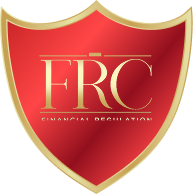Investors often choose between passive and active investment strategies, but beyond performance, tax efficiency plays a crucial role in maximising long-term returns.
Passive investing typically involves low-cost index funds or ETFs, resulting in fewer taxable events. In contrast, active investing, which involves frequent trading, can generate higher capital gains taxes and transaction costs.
Understanding the tax implications of passive vs. active investing helps investors optimise after-tax returns and choose the best strategy based on their financial goals and tax situation.
What is Passive vs. Active Investing?
✔ Long-term, buy-and-hold strategy.
✔ Investments in index funds, ETFs, and low-turnover mutual funds.
✔ Lower capital gains tax liability due to fewer sales.
🔹 Example:
Investing in an S&P 500 ETF for 10+ years incurs minimal capital gains tax until shares are sold.
✔ Frequent buying and selling of stocks, funds, or derivatives.
✔ Aims to beat the market through tactical trading.
✔ Higher capital gains tax due to frequent trades.
🔹 Example:
An active investor buys and sells stocks weekly, generating short-term taxable gains.
Key Tax Considerations for Passive vs. Active Investing
Capital gains tax applies when an investor sells an asset for a profit.
✔ Long-term holding means capital gains are taxed at lower long-term rates.
✔ Capital gains taxes only apply when shares are sold, not during ownership.
✔ Frequent trading triggers short-term capital gains tax, which is higher than long-term rates.
✔ Short-term gains are taxed as regular income, increasing tax liability.
🔹 Example:
🔹 Tax Tip:
Hold assets for over a year to benefit from lower long-term CGT rates.
2. Turnover & Tax Efficiency
Investment turnover refers to how frequently assets are bought and sold.
✔ Passive funds have low turnover, meaning fewer taxable events.
✔ Active funds have high turnover, leading to frequent taxable distributions.
🔹 Example:
An index fund tracking the S&P 500 may have a 5% turnover rate, while an actively managed mutual fund could have a 100% turnover rate, leading to more frequent taxable gains.
🔹 Tax Tip:
Choose low-turnover funds in taxable accounts to reduce CGT exposure.
3. Dividend Tax Considerations
Dividend income from stocks and funds is taxable, but tax implications vary.
✔ Many index funds prioritise capital growth over dividends, reducing taxable income.
✔ Accumulation funds reinvest dividends, avoiding immediate taxation.
✔ Actively managed funds often pay frequent dividends, leading to ongoing tax liabilities.
✔ Dividend-paying stocks in taxable accounts may increase tax burdens.
🔹 Example:
🔹 Tax Tip:
Use ISAs, SIPPs, or tax-free accounts to avoid dividend tax.
4. Mutual Funds vs. ETFs: Tax Efficiency Comparison
Exchange-traded funds (ETFs) are more tax-efficient than actively managed mutual funds due to structural differences.
✔ ETFs have lower turnover, reducing taxable distributions.
✔ Mutual funds distribute capital gains to investors, even if shares aren’t sold.
🔹 Example:
An actively managed mutual fund may distribute taxable gains each year, while an index ETF defers taxation until sale.
🔹 Tax Tip:
ETFs are better for taxable accounts, while actively managed mutual funds should be held in tax-advantaged accounts.
5. Tax-Loss Harvesting Benefits for Both Strategies
✔ Offset capital gains by selling underperforming assets to reduce tax liability.
✔ Active investors can use frequent losses to counterbalance gains.
🔹 Example:
If an investor has a £10,000 capital gain, they can sell a £5,000 losing stock to reduce their taxable gain to £5,000.
🔹 Tax Tip:
Use tax-loss harvesting at year-end to minimise tax exposure.
Tax-Efficient Investing Strategies
🔹 Key Tax Tips:
✔ Passive investors should hold investments long-term for lower capital gains tax.
✔ Active investors should use tax-loss harvesting to offset frequent taxable gains.
✔ Tax-advantaged accounts (ISAs, SIPPs, Roth IRAs) reduce tax burdens for both strategies.
Bringing It All Together:
✔ Passive investing is generally more tax-efficient due to lower turnover, fewer taxable events, and long-term capital gains benefits.
✔ Active investing can generate higher tax liabilities but can mitigate taxes using tax-loss harvesting and tax-advantaged accounts.
✔ ETFs and tax-efficient funds provide lower tax burdens compared to actively managed funds.
✔ Using ISAs, SIPPs, and 401(k)s can significantly reduce taxes for both passive and active investors.
By understanding the tax implications of each strategy, investors can structure their portfolios to maximise after-tax returns and build long-term wealth.
Be the first to know about new class launches and announcements.


Financial writer and analyst Ron Finely shows you how to navigate financial markets, manage investments, and build wealth through strategic decision-making.
